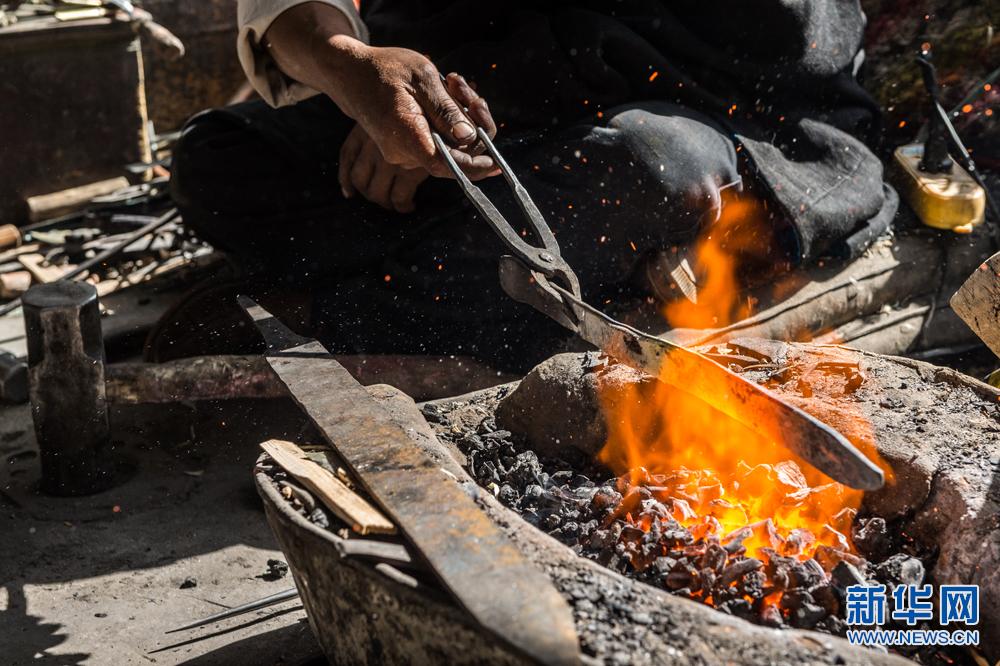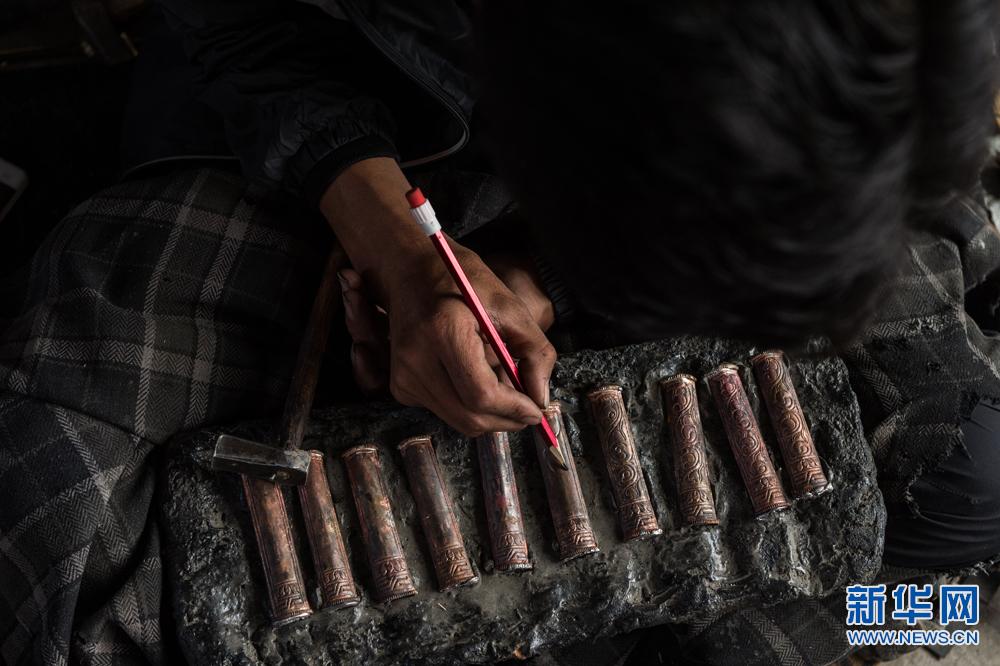Inheritor of Tibetan knife craftsmanship

Pudawa, an inheritor of Lhaze’s Tibetan knife craftsmanship, lives in Lhaze Village, Lhaze Township, Shigatse, Tibet. Pudawa is the sixth generation successor of this craftsmanship which has been passed down in his family for more than 100 years. The production processes of Pudawa’s knives, from forging the blade, grinding, and polishing, to sheathing the blade, engraving, and adding color, are all done by hand. In 2008, the Tibetan metal foraging skill (Tibetan knife foraging skill) of Lhaze County, Shigatse Prefecture, Tibet was included in the second group national intangible cultural heritage list, and Pudawa was recognized as one of the inheritors of the craftsmanship.
Pudawa, an inheritor of Lhaze’s Tibetan knife craftsmanship, lives in Lhaze Village, Lhaze Township, Shigatse, Tibet. Pudawa is the sixth generation successor of this craftsmanship which has been passed down in his family for more than 100 years. The production processes of Pudawa’s knives, from forging the blade, grinding, and polishing, to sheathing the blade, engraving, and adding color, are all done by hand. In 2008, the Tibetan metal foraging skill (Tibetan knife foraging skill) of Lhaze County, Shigatse Prefecture, Tibet was included in the second group national intangible cultural heritage list, and Pudawa was recognized as one of the inheritors of the craftsmanship.
Pudawa, an inheritor of Lhaze’s Tibetan knife craftsmanship, lives in Lhaze Village, Lhaze Township, Shigatse, Tibet. Pudawa is the sixth generation successor of this craftsmanship which has been passed down in his family for more than 100 years. The production processes of Pudawa’s knives, from forging the blade, grinding, and polishing, to sheathing the blade, engraving, and adding color, are all done by hand. In 2008, the Tibetan metal foraging skill (Tibetan knife foraging skill) of Lhaze County, Shigatse Prefecture, Tibet was included in the second group national intangible cultural heritage list, and Pudawa was recognized as one of the inheritors of the craftsmanship.
Pudawa, an inheritor of Lhaze’s Tibetan knife craftsmanship, lives in Lhaze Village, Lhaze Township, Shigatse, Tibet. Pudawa is the sixth generation successor of this craftsmanship which has been passed down in his family for more than 100 years. The production processes of Pudawa’s knives, from forging the blade, grinding, and polishing, to sheathing the blade, engraving, and adding color, are all done by hand. In 2008, the Tibetan metal foraging skill (Tibetan knife foraging skill) of Lhaze County, Shigatse Prefecture, Tibet was included in the second group national intangible cultural heritage list, and Pudawa was recognized as one of the inheritors of the craftsmanship.
Pudawa, an inheritor of Lhaze’s Tibetan knife craftsmanship, lives in Lhaze Village, Lhaze Township, Shigatse, Tibet. Pudawa is the sixth generation successor of this craftsmanship which has been passed down in his family for more than 100 years. The production processes of Pudawa’s knives, from forging the blade, grinding, and polishing, to sheathing the blade, engraving, and adding color, are all done by hand. In 2008, the Tibetan metal foraging skill (Tibetan knife foraging skill) of Lhaze County, Shigatse Prefecture, Tibet was included in the second group national intangible cultural heritage list, and Pudawa was recognized as one of the inheritors of the craftsmanship.
Pudawa, an inheritor of Lhaze’s Tibetan knife craftsmanship, lives in Lhaze Village, Lhaze Township, Shigatse, Tibet. Pudawa is the sixth generation successor of this craftsmanship which has been passed down in his family for more than 100 years. The production processes of Pudawa’s knives, from forging the blade, grinding, and polishing, to sheathing the blade, engraving, and adding color, are all done by hand. In 2008, the Tibetan metal foraging skill (Tibetan knife foraging skill) of Lhaze County, Shigatse Prefecture, Tibet was included in the second group national intangible cultural heritage list, and Pudawa was recognized as one of the inheritors of the craftsmanship.
Your Comment
Name E-mailRelated News
-
;
-
-

-
Craftsmanship of Tibetan Thangka painting
Photo shows the marvelous craftsmanship of Tibetan Thangka painting at an exhibition held in the National Museum of China from April 10 to May 13.
-
-
-

-
Craftsmanship of making Tibetan boots goes on
Tibetan boot inheritor Migmar (L) teaches his prentice to make Tibetan boots at the Xingwang Traditional Costumes Farmers Specialized Cooperatives in Gadong Township of Bainang County in Shigatze Prefecture, southwest China's Tibet Autonomous Region, May 27, 2013.
-
-
-
Tibetan ethnic craftsmanship well inherited and promoted
The gigantic and low pitch voice of monks chanting sutra script veils every corners of the monastery, a pervading air of Tibetan Buddhist rituals.
-
Based in Lhasa, Tibet Vista is a Tibet travel agency that specialized in Tibet permit, and Tibet tours for both private and group travelers at a local price!
•4 Days Lhasa City Group Tour from USD 460 •8 Days Everest Base Camp Group Tour from USD 850 •15 Days Mt.Kailash Group Tour from USD 1780 •2016 Tibet Train Tours from Beijing, Shanghai, Chengdu, Xining,etc










